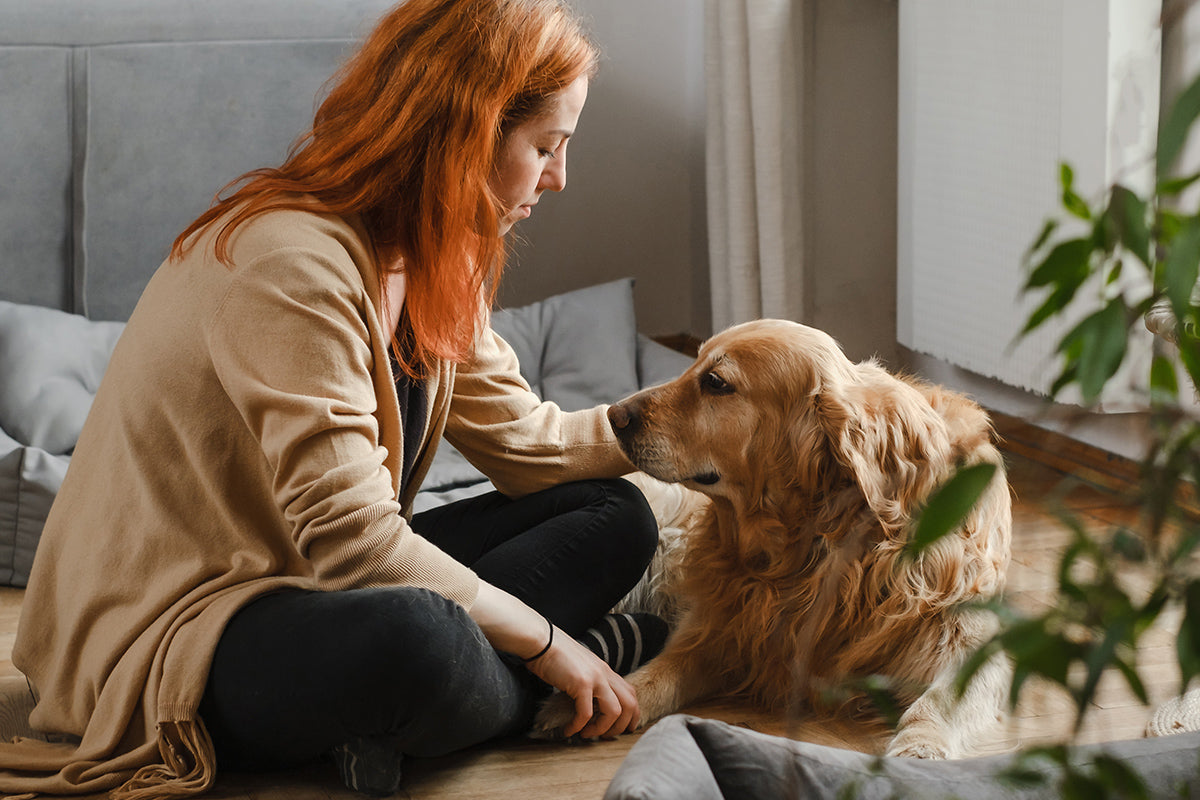We all know that's unfortunately not the case (no matter how smart you think your pet is!). That's why doing regular health checks on your dog is so important. This gives you and your vet a chance to find any problems early on, when they can be quicker and easier to treat. It also offers a better idea of what's normal for your pet – and also what's not.
Luckily you don't have to have a veterinary degree or any fancy equipment to carry out a routine check-up on your pet at home. All you need is this handy 8-step guide.
Before we get started
This should go without saying, but if you're worried your dog is dealing with any of the below, don't hesitate to call your vet. It's better to be safe than sorry. Explain what you've seen or smelled, and they'll let you know if you need to bring your pet in for a more serious look or if there are other ways to treat what's wrong.
- Watch them breathe
The best time to assess your dog’s breathing is when they are resting or asleep. Count how many times they inhale in one minute (a quick way to do this is to count how many times they breathe in over a 15 second period and multiply this number by 4). Normal respiratory rates in dogs are typically less than 32 breaths per minute. Sometimes the respiratory rate can increase periodically in different parts of their sleep cycle, so if you get an elevated respiratory rate, be sure to repeat the count at different times over a few hours. If your dog has a consistent elevated breathing rate then seek urgent veterinary attention. While you are watching them breathe, listen for any abnormal sounds such as excessive snoring, wheezing or coughing. If your dog seems to be panting more than normal, or is more ‘out of breath‘ during routine exercise, then it’s also time to see the vet. - Follow their nose
When it comes to your dog's health, you need to know what's important when you check out their nose. Some owners think a dry nose is itself a sign there's a problem. But, thanks to science, we nose – er, know – that's not the case. Your pet's nose may be cold and wet, dry and warm or somewhere in between. As long as everything else seems fine and they're eating and drinking enough, you're alright. However, it is important to also check your dog's nose for soreness, discolouration, crusting or discharge. This may indicate a problem. - Gaze into your dog's eyes
When you check out your dog's eyes, you want them to look bright and alert. Don't stress if you see a small amount of brown buildup around the corners. That's generally due to normal tears - simply wipe this clean with a tissue each day. Here are the things that would warrant a visit to the vet. Green or yellow discharge
Excessive eye watering
Squinting or closing one or both eyes, which may indicate pain
The whites of your dog's eyes appearing more pink/red than usual
Excessive scratching or rubbing of the eyes
One or both eyes appear more cloudy than normal
One or both eyes appears swollen
- Use your eyes and nose on their ears
We hear your dog's ears can clue you in on issues your pet might be having. Unusual scents in your dog's ears can be a sign of infection or other issues, so give them a quick smell during your check-up. Then have a look to see if there's any excess dirt, discharge or swelling, which can all be signs of issues.
Other specific things to look out for include: Redness
Sticky, thick or black, crumbly discharge
Consistent ear scratching, shaking the head, tilting the head to one side
Swelling that closes up the entrance to the ear
- Inspect the mouth
This one can be tough, as many dogs don't love sitting still so you can have a peek at their pearly whites. But if you can examine your dog's gums and teeth safely, they can tell you a lot about your pet's health.
If possible, raise their lips and check for: Normal pink gums - the gums should be the same colour as ours, if they look pale or bluish, then see a vet immediately. It can sometimes be difficult to inspect gum colour in dogs with pigmented gums - if this is your dog, then try find an area with a pink patch to inspect
Brown tartar building up on the teeth
Redness along the gum
Gum problems where teeth are decayed and exposed
Foul smells
Lumps on the gums, lips, inside the cheeks, or under the tongue
- Skin check
Next, examine your dog's skin with your hands and eyes. Just think of it as a really in-depth, extended pat. Look for areas of hair loss, unusual lumps and bumps, rashes, crusting, or redness, as well as any signs of parasites such as ticks and fleas. Also keep an eye on your dog to see if they're biting, scratching or chewing any parts of their body that could be irritated. - Do their nails
While a rocking new shade of polish would be pretty cool, this is more about making sure your dog doesn't get ingrown toenails. Check for broken nails and make sure there's no abnormal swelling or redness around the toes and between the foot pads. And don't forget the dewclaw, which is located just higher up the foot. If the nails are overgrown, a visit to your professional groomer or vet is recommended. - Get to the bottom of things
You're not done until you've checked the bum, as you don't want to get behind on the health of their behind. Have a quick look under your dog's tail. Anal glands located there can get damaged or infected, which can cause swelling, pain and irritation. Check for this swelling or redness, or if there is a fouler-than-normal odour coming from that area.
Completing these seven steps at home won't earn you a white coat or vet certification. But it will help you keep better tabs on your dog's health.
Do you have any tips or tricks for your at-home checkups?







